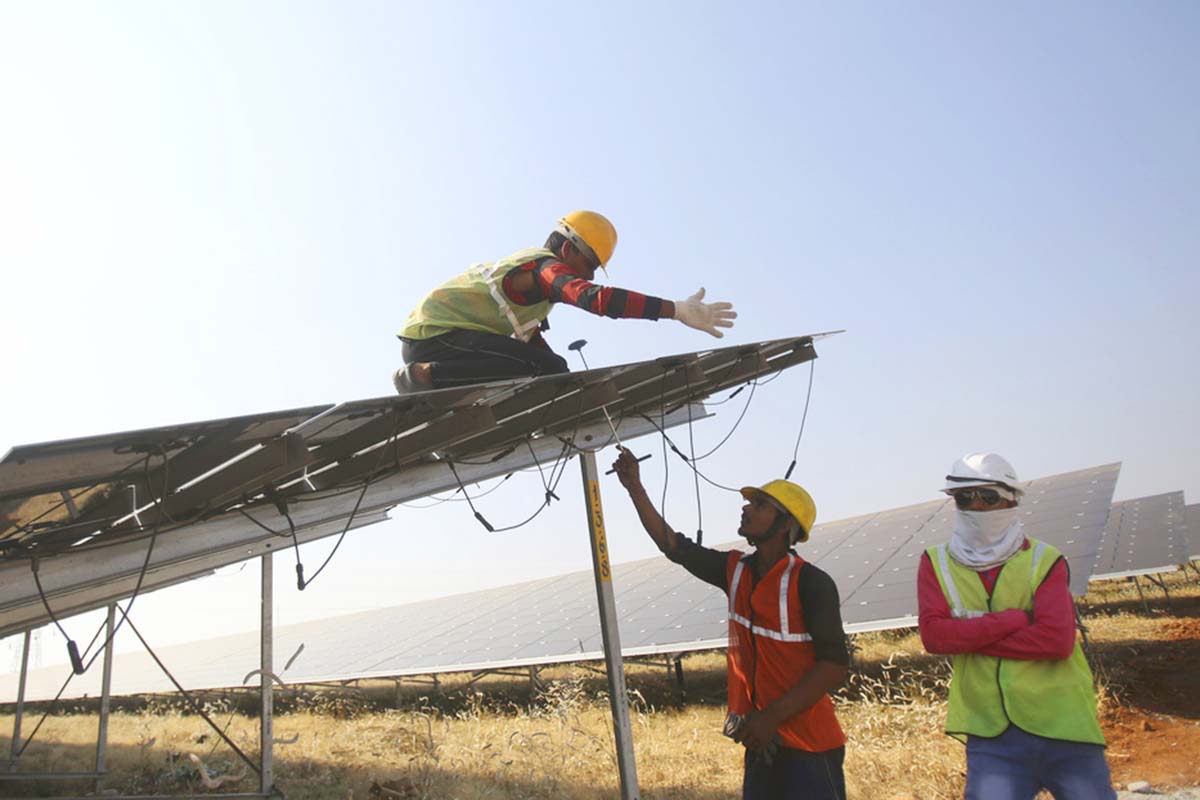
BENGALURU, INDIA: Renewable projects in India have been growing for years, from rooftop solar installations in small towns to large projects across the desert and wind turbines and solar panels on farmland, all contributing to the country's climate goal of clean energy transition.
However, a combination of policy decisions, politics and supply chain issues meant solar projects in 2023 were delayed and uncertain, causing the country to miss its annual clean energy installation target in a year that saw heat records broken and severe floods. Experts say this is a dent in the country's ambitions, but some believe the shortfall can be made up this year.
A report by the Institute for Energy Economics and Financial Analysis found that the country installed only 13.7 gigawatts of clean energy last year, such as wind, solar and nuclear, compared to 16.3 gigawatts in 2022. India needs to install 40 gigawatts a year to meet its goal of installing 500 gigawatts of clean energy, enough to power 51 million homes in the country, by the end of the decade.
The shortfall "means that meeting the 2030 target for clean energy is challenging," said Charith Konda, part of the team that put together the IEEFA's analysis.
Solar module prices have dropped worldwide in recent years, but in India, they have been subject to conflicting import tax policies, with the government first ordering high import taxes and then backtracking within a year. This created a "wait and watch" attitude among solar project developers, said Vinay Pabba, chief operating officer of Hyderabad-based renewables company Vibrant Energy.
It takes up to two years for solar projects to come online after all agreements and paperwork are finalised, he said, so "changing policies in shorter timeframes creates uncertainty."
Many projects, both large and small and across different states, have been delayed because of solar project developers holding off making new orders, said Gurpreet Singh Walia, a consultant for renewable energy projects in India.
Konda said that incentives to encourage domestic manufacturing of solar modules, rather than importing them from abroad, conflicted with the country's goal of installing renewable energy quickly.
And since what was being domestically produced in India was preferred by countries like the United States for their own energy transition over Chinese manufacturers, a large increase in exports of solar power parts from India meant there was less supply available for local projects, analysts say.
Experts also say fossil fuel lobbying in the country meant policies to encourage renewable growth have fallen short.
Between 2008 and 2022, India added the third-most solar power capacity of any country, behind only China and the United States, and the sixth-most wind power, according to the Global Energy Monitor. India did see a dip in installations in 2020 because of the COVID-19 pandemic, but otherwise mostly saw an upward trend for new projects year-on-year. But also in those 15 years, the amount of coal capacity added in the country was well over double that of wind and solar, the Global Energy Monitor's data shows.
"People in positions of power and decision-makers do not believe that renewable energy can provide firm power" because they are not convinced that batteries can store enough renewable energy to make reliable and consistent electricity when the sun doesn't shine or the wind doesn't blow, said Alexander Hogeveen Rutter, an independent energy analyst based in New Delhi. "When it comes to getting real power, coal is still considered the best option in India."
This perspective means the country, a significant emitter of greenhouse gases, continues to install new coal each year as electricity demand increases due to development and population growth. Over 75% of India's electricity comes from coal, but it plans to source 50% of its increasing electricity needs from renewable sources by the end of the decade.
However, some analysts believe that most of these issues have been resolved and that India can compensate for the shortfall of new projects this year.
There was a rise in solar module imports towards the end of last year, suggesting that many of the delayed projects will soon be completed, said Vinay Rustagi, who analyses the clean power sector for the financial research firm Crisil.
"We can expect a record 2024 in that sense," he said. But he warned that even if India compensates for lost ground, "this kind of volatility is not beneficial for the market overall. It detracts from the ambitious targets the government has set."
Hogeveen Rutter added that a number of new tenders for renewable energy projects issued in 2023 is a positive sign that India will install more clean power in the coming years.
But even if the country does compensate for the slow growth last year, he warned that India's renewable energy targets are arbitrary figures, not linked to the resource planning process. India's demand growth alone justifies 50 to 55 gigawatts of clean power additions annually, and that demand is expected to continue to rise in the coming decades.
Without more ambitious clean energy targets, the country's renewable growth won't reach its full potential, Hogeveen Rutter said.
"There are entrepreneurs and innovators in both renewables and storage who are world-class and ready to be unleashed," he said. "As soon as the targets align with India's demand, there is no doubt India can become a clean energy powerhouse."
By RSS/AP






